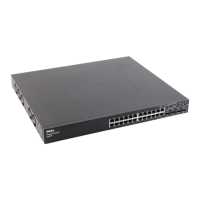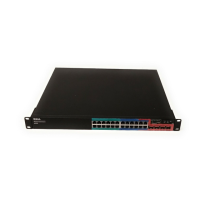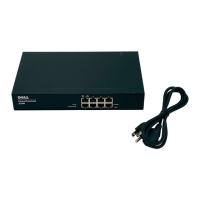152 Multicast
Example #2: View IGMP Proxy Configuration Data
You can use various commands from Privileged EXEC or User EXEC modes to show IGMP proxy
configuration data.
• Use the following command to display a summary of the host interface status parameters. It displays
the parameters only when IGMP Proxy is enabled.
console#show ip igmp-proxy
Interface Index................................ vlan 15
Admin Mode..................................... Enabled
Operational Mode............................... Disabled
• Use the following command to display interface parameters when IGMP Proxy is enabled:
console#show ip igmp-proxy interface
• Use this command to display information about multicast groups that IGMP proxy reported. It
displays a table of entries with the following as the fields of each column.
console#show ip igmp-proxy groups
• Use the following command to display information about multicast groups that IGMP proxy reported.
It displays a table of entries with the following as the fields of each column:
console#show ip igmp-proxy groups detail
DVMRP
The Distance Vector Multicast Routing Protocol (DVMRP) is one of several multicast routing protocols
you can configure on the switch (PIM-SM and PIM-DM are the others). Note that only one multicast
routing protocol (MRP) can be operational on a router at any time.
DVMRP is an interior gateway protocol; i.e., it is suitable for use within an autonomous system, but not
between different autonomous systems.
DVMRP is based on RIP: it forwards multicast datagrams to other routers in the AS and constructs a
forwarding table based on information it learns in response. More specifically, it uses this sequence.
• A new multicast packet is forwarded to the entire multicast network, with respect to the time-to-live
(TTL) of the packet.
• The TTL restricts the area to be flooded by the message.
• All routers that do not have members on directly-attached subnetworks send back
Prune messages
to
the upstream router.
• The branches that transmit a prune message are deleted from the delivery tree.
• The delivery tree which is spanning to all the members in the multicast group, is constructed in the
form of a DVMRP forwarding table.

